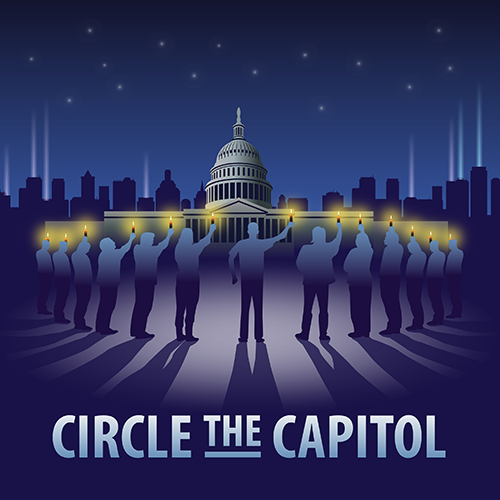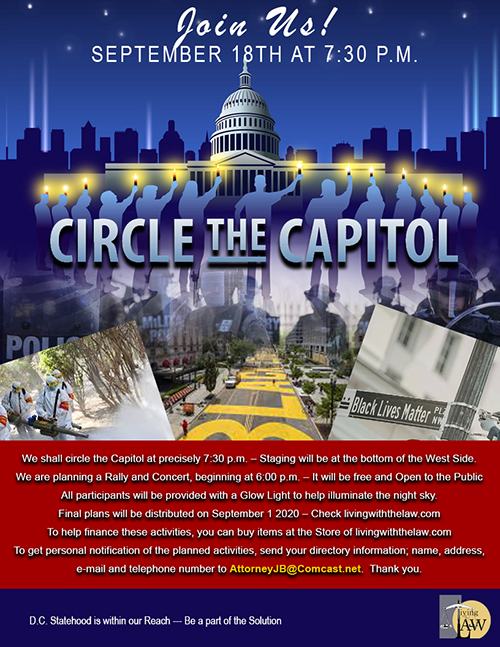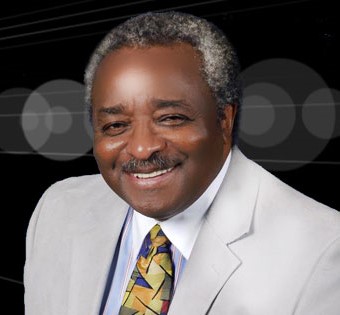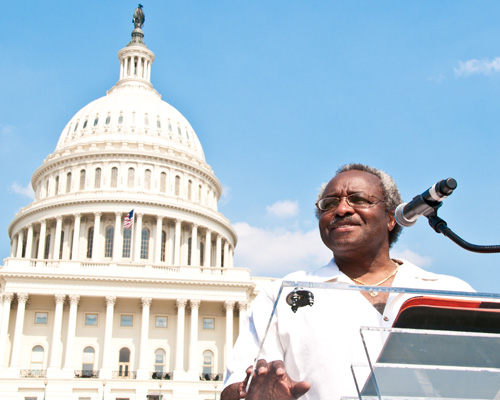Second Excerpt from “Towards Equal Footing”
From 1790 to 1800, the 3,100 residents of what was to become the District of Columbia were fully enfranchised. They voted for President, Vice-President, Senators and Representatives in elections in Maryland and Virginia --- the two states from whom land was ceded and accepted to create the ten miles square, diamond-shaped capital city. However, when Congress moved to the District in 1800, there was no apparatus in place for participation in federal elections and, consequently, the residents became disenfranchised. Most historians attribute this unfortunate result to inadvertence, historical oversight, the press of creating a new government. It would seem improbable that the very persons who fought so hard and at such sacrifice to end the tyranny of taxation without representation would then impose such a system. Even veterans who had fought in the war for independence were among those with this second-class status, simply because they happened to reside in the nation’s capital. As early as 1803, a bill to return the District back to Maryland and Virginia was introduced. And, in 1846, the Virginia portion of the District --- now Arlington and Alexandria --- was indeed returned, by simple act of Congress, to Virginia. Later, the charter of the City of Georgetown was revoked, and Georgetown and Washington were consolidated, consisting only of land originally ceded by Maryland, resulting in today’s District of Columbia.
In 1871, nearly 100 years after the signing of the Declaration of Independence, the District got its first democratically elected government. It was organized like a territorial government and consisted of a governor, a bicameral legislature with an appointed 11-member Upper House, and an elected 22-member Lower House. This government was notoriously corrupt and wasteful. After three years, Congress intervened and set up a "temporary solution"-which lasted 100 years.
By this "temporary" system, three commissioners, appointed by the President of the United States, ran the city. In the late 1960s, President Johnson reduced the number of commissioners to one, whom he began addressing as "Mr. Mayor."
Years of civil rights activism finally culminated in the Twenty-Third Amendment, which allowed District residents to cast their ballots for President and the Home Rule Act, which was passed in 1974. That Act granted District residents their first locally elected government in 100 years. Under "home rule," a mayor and a city council governed the city. In 1978 Congress attempted to provide DC with full voting representation in Congress when it approved the DC Voting Rights constitutional amendment by two-thirds majorities of both chambers. The amendment failed to win ratification by the required 38 states, and DC citizens' disenfranchisement continued ……. Until now!
Give us your name, mailing address, e-mail address, telephone number, precinct (if you know it), and we will personally announce to you the details that we planning to Circle the Capitol. Send to - AttorneyJB@comcast.net.








